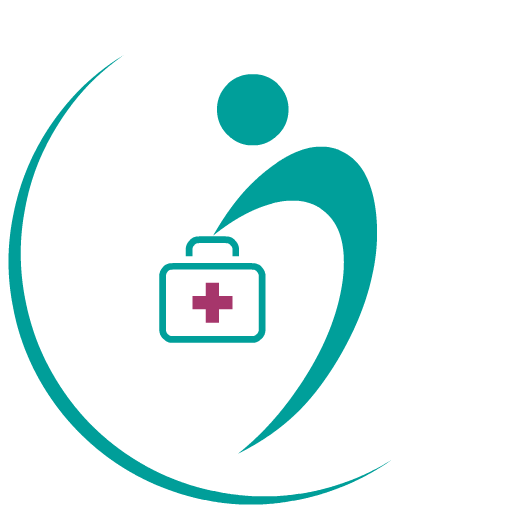Gallstones are hardened deposits of digestive juices that can form in the gallbladder.
The gallbladder is a small pear-shaped organ located on the right side of the abdomen, just below the liver.
The gallbladder contains digestive juices called bile, which are secreted into the small intestine. Gallstones vary from the size of a grain of sand to the size of a golf ball. Some people develop only one gallstone, while others develop many gallstones at the same time.
People who experience gallstone symptoms usually need surgery to remove the gallbladder. Gallstones that do not cause signs or symptoms usually do not require treatment.
Symptoms
Gallstones may cause no signs or symptoms. If a gallstone lodges in a duct and causes a blockage, the resulting signs and symptoms may include:
Sudden and rapidly intensifying pain in the upper right portion of your abdomen
Sudden and rapidly intensifying pain in the center of your abdomen, just below your breastbone
Back pain between your shoulder blades
Pain in your right shoulder
Nausea or vomiting
Gallstone pain may last several minutes to a few hours.
When to see a doctor
Make an appointment with your doctor if you have any signs or symptoms that worry you.
Seek immediate care if you develop signs and symptoms of a serious gallstone complication, such as:
Abdominal pain so intense that you can't sit still or find a comfortable position
Yellowing of your skin and the whites of your eyes (jaundice)
High fever with chills
Causes
It's not clear what causes gallstones to form. Doctors think gallstones may result when:
Your bile contains too much cholesterol. Normally, your bile contains enough chemicals to dissolve the cholesterol excreted by your liver. But if your liver excretes more cholesterol than your bile can dissolve, the excess cholesterol may form into crystals and eventually into stones.
Your bile contains too much bilirubin. Bilirubin is a chemical that's produced when your body breaks down red blood cells. Certain conditions cause your liver to make too much bilirubin, including liver cirrhosis, biliary tract infections and certain blood disorders. The excess bilirubin contributes to gallstone formation.
Your gallbladder doesn't empty correctly. If your gallbladder doesn't empty completely or often enough, bile may become very concentrated, contributing to the formation of gallstones.
Types of gallstones
Types of gallstones that can form in the gallbladder include:
Cholesterol gallstones. The most common type of gallstone called a cholesterol gallstone, often appears yellow in color. These gallstones are composed mainly of undissolved cholesterol but may contain other components.
Pigment gallstones. These dark brown or black stones form when your bile contains too much bilirubin.
Risk factors
Factors that may increase your risk of gallstones include:
Being female
Being age 40 or older
Being a Native American
Being a Hispanic of Mexican origin
Being overweight or obese
Being sedentary
Being pregnant
Eating a high-fat diet
Eating a high-cholesterol diet
Eating a low-fiber diet
Having a family history of gallstones
Having diabetes
Having certain blood disorders, such as sickle cell anemia or leukemia
Losing weight very quickly
Taking medications that contain estrogen, such as oral contraceptives or hormone therapy drugs
Having liver disease
Complications
Complications of gallstones may include:
Inflammation of the gallbladder. A gallstone that becomes lodged in the neck of the gallbladder can cause inflammation of the gallbladder (cholecystitis). Cholecystitis can cause severe pain and fever.
Blockage of the common bile duct. Gallstones can block the tubes (ducts) through which bile flows from your gallbladder or liver to your small intestine. Severe pain, jaundice and bile duct infection can result.
Blockage of the pancreatic duct. The pancreatic duct is a tube that runs from the pancreas and connects to the common bile duct just before entering the duodenum. Pancreatic juices, which aid in digestion, flow through the pancreatic duct.
A gallstone can cause a blockage in the pancreatic duct, which can lead to inflammation of the pancreas (pancreatitis). Pancreatitis causes intense, constant abdominal pain and usually requires hospitalization.Gallbladder cancer. People with a history of gallstones have an increased risk of gallbladder cancer. But gallbladder cancer is very rare, so even though the risk of cancer is elevated, the likelihood of gallbladder cancer is still very small.
Prevention
You can reduce your risk of gallstones if you:
Don't skip meals. Try to stick to your usual mealtimes each day. Skipping meals or fasting can increase the risk of gallstones.
Lose weight slowly. If you need to lose weight, go slow. Rapid weight loss can increase the risk of gallstones. Aim to lose 1 or 2 pounds (about 0.5 to 1 kilogram) a week.
Eat more high-fiber foods. Include more fiber-rich foods in your diet, such as fruits, vegetables, and whole grains.
Maintain a healthy weight. Obesity and being overweight increase the risk of gallstones. Work to achieve a healthy weight by reducing the number of calories you eat and increasing the amount of physical activity you get. Once you achieve a healthy weight, work to maintain that weight by continuing your healthy diet and continuing to exercise.
Blogs
Stay connected to health experts and read what they have to say via DocSmart.
Please sign up to create your own blog





